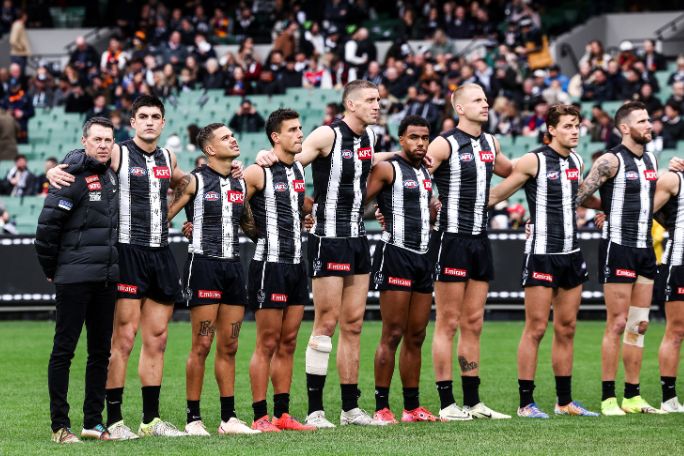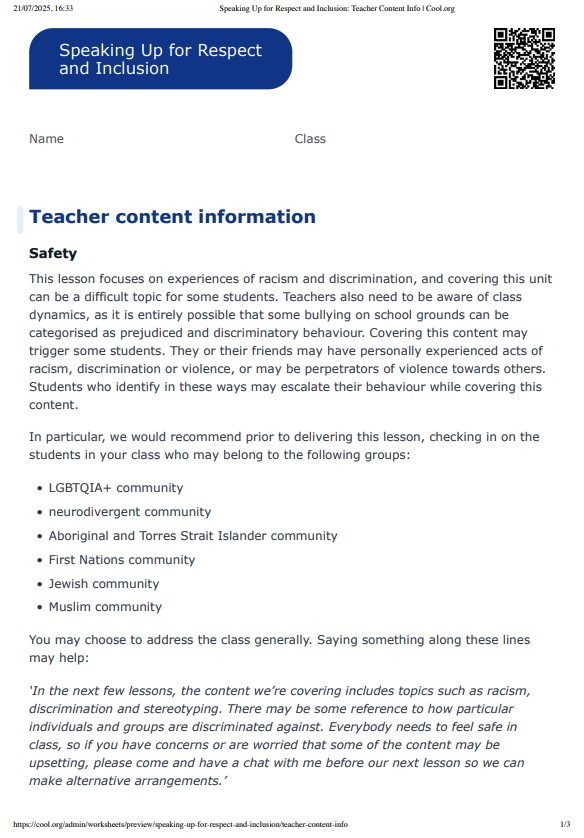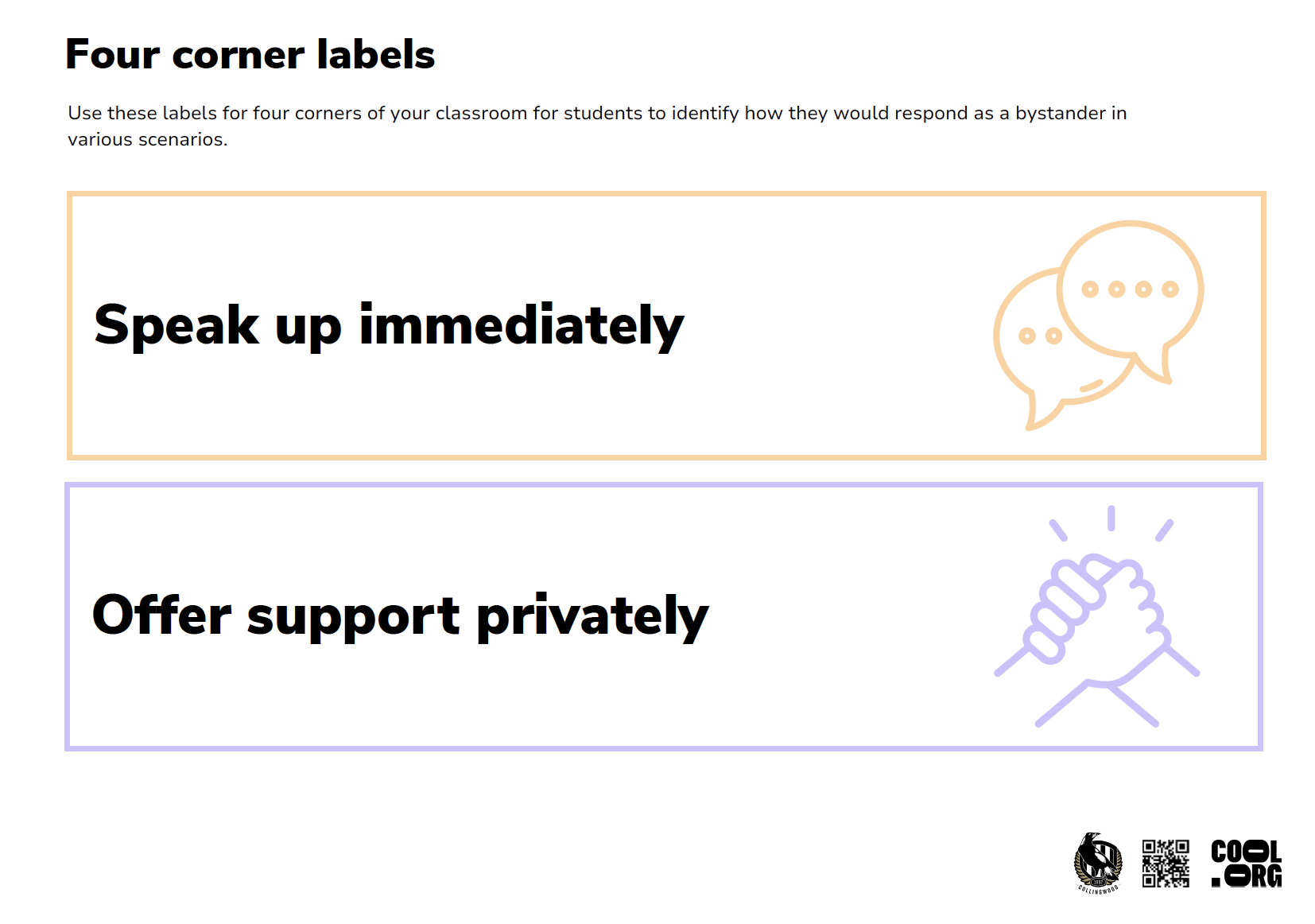Lesson summary
Students will engage in interactive tasks designed to help them explore and understand the complex emotions associated with being bullied, being a bystander, and being an ally. They will examine different types of bystanders and develop practical strategies to confront and challenge discrimination in real-life situations.
Learning intentions
Students will:
- explore the role bystanders play in promoting respect and inclusion.
Success criteria
Students can:
- apply strategies to challenge discrimination in real-life situations
- reflect on their role in fostering respect and inclusivity in their communities.
Lesson guides and printables
Curriculum links
Select your curriculum from the options below.
Lesson details
Skills
This lesson is designed to build students’ competencies in the following skills:
- communication
- cultural understanding
- empathy
- ethical understanding
- initiative
- intercultural understanding
- problem solving
Curriculum Mapping
Australian Curriculum (v9.0) content description:
Year 5 and 6, Health and Physical Education
Students learn to:
- describe and demonstrate how respect and empathy can be expressed to positively influence relationships (AC9HP6P04)
- describe and implement strategies to value diversity in their communities (AC9HP6P05).
Relevant parts of Year 5 and 6 achievement standards: Students propose strategies to demonstrate respect, empathy and inclusion.
NSW Syllabus outcomes:
A student:
- explains and applies skills and strategies to manage respectful relationships (PH3-RRS-01).
General capabilities: Ethical Understanding, Intercultural Understanding, Literacy, Personal and Social Capability
Cross-curriculum priority: Aboriginal and Torres Strait Islander Histories and Cultures
Level of teacher scaffolding: Medium - facilitation of discussion.
UN Sustainable Development Goals
- Target 4.7: By 2030, ensure that all learners acquire the knowledge and skills needed to promote sustainable development, including, among others, through education for sustainable development and sustainable lifestyles, human rights, gender equality, promotion of a culture of peace and non-violence, global citizenship and appreciation of cultural diversity and of culture’s contribution to sustainable development.
Resources Required
- Activity sheet - 4 corner labels
- Factsheet - Impacts of bystander behaviour
- Visual Explainer - Understanding bystander behaviour
Additional Info
These resources have been created with the support of the Collingwood Football Club and Collingwood Football Club Community Foundation. The Collingwood Football Club Foundation leads social and cultural change through football, and is committed to leading, acting, progressing and inspiring anti-racism, cultural safety, diversity, equity and respect.
Related Professional Learning
Beginning to Include First Nations People’s Perspectives in Your Classroom
Quick Summary: This course aims to inform and upskill educators in incorporating Aboriginal and Torres Strait Islander perspectives in their classrooms.





Welcome back!
Don't have an account yet?
Log in with:
Create your free Cool.org account.
Many of our resources are free, with an option to upgrade to Cool+ for premium content.
Already have an account?
Sign up with:
By signing up you accept Cool.org's Terms and Conditions(Opens in new tab) and Privacy Policy(Opens in new tab).